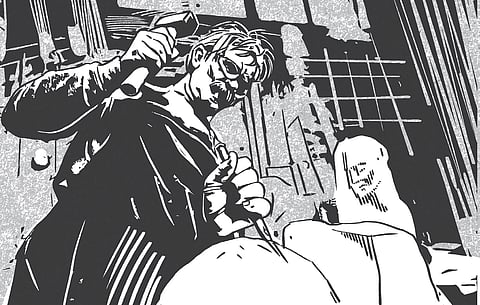The virtue of slow productivity
Side hustles have always intrigued me. My second book was focused largely on professionals who have built interesting passion projects and created new income streams while retaining their day jobs. It isn’t easy but with consistency and commitment, carving an alternate identity is a realistic possibility. This doesn’t always mean hustling hard, doing more, and taking on more projects than we can manage.
Take Cal Newport as an example. After his PhD from MIT, he became a computer science professor at Georgetown University. Being an academic is his main job but he is a household name because of the books he writes. So far, his books have sold more than two million copies and have been translated into 40 languages. Newport popularised “deep work” (the ability to concentrate deeply on a single problem or project for an extended period) and nudged us to differentiate being busy from being productive. His work had a major impact on my life.
In his new book, Newport introduces a compelling concept: slow productivity, a new approach to work is predicated on three foundational principles—doing fewer things, working at a natural pace, and obsessing over quality. Let’s delve into these concepts and explore how we may use slow productivity to reimagine our work lives.
Do Fewer Things
Warren Buffett famously highlighted the difference in mindset between somewhat successful people and the very successful, noting that the latter group tends to say no to almost everything as they have a clear sense of what they want to accomplish. This concept is closely related to a principle known as the 25/5 rule, which, although not directly articulated by Buffett, was endorsed by him during a shareholder meeting as a compelling strategy.
The rule is simple yet powerful: you start by listing your top 25 career goals, then identify and circle the five that resonate the most deeply with you—these become your primary focus. The remaining 20, which are deemed less critical, are then crossed off the list. This exercise can declutter your mind and calendar, allowing you to concentrate on a handful of meaningful objectives. It reinforces the idea that managing a limited number of priorities is not only more practical but also more effective, embodying the maxim that less is indeed more.
Most of us have long to-do lists and we struggle to get through them. The more things pile on, the more we feel unproductive. To overcome this rut, we don’t need to work more or find ways to increase our output. We need to develop the discipline to do fewer things that move the needle.
Working at a Natural Pace
Newport nudges us to take longer and dedicate ample time to tasks to ensure high-quality results. He also suggests that we embrace seasonality and incorporate cycles of work intensity and relaxation into one’s schedule, similar to natural seasonal patterns. This helps maintain sustained productivity and creativity over longer periods that transform routine tasks into more meaningful experiences. Investor Naval Ravikant posits that we should work like lions, not cows. While cows graze steadily throughout the day, lions conserve energy by resting and then exert maximum effort in short, powerful bursts when opportunities arise.
Newport cautions us of the dangers of “pseudo-productivity,” where constant activity gives the illusion of productivity without substantive results. He argues that this can lead to burnout and a lack of true accomplishment. A shift from relentless activity to a more intentional and quality-focused work ethic can be transformational over the long run. It all comes down to discovering and adhering to personal rhythms and patterns.
Obsess Over Quality
Michelangelo devoted over three years, from 1501 to 1504, to meticulously crafting the statue of David. He faced significant challenges due to the large, flawed piece of Carrara marble he used, which had been previously abandoned by other artists. His approach was not centred around producing a high volume of work. Instead, Michelangelo emphasised an intense focus on quality and perfection in each of his projects.
In our busy work lives, we may not always be able to dedicate three years to a single project, but we can strive to improve the quality of our output with every iteration. Getting the job done isn’t enough. Doing it well and improving over time is the key.
Concluding Thoughts
The key to doing more is taking on fewer things, understanding our work rhythms, and focusing on quality. Remember the goal is not to maximise productivity for a day or a week, but for the duration of our careers in a way we enjoy the process. Being productive for the sake of it almost always backfires so it makes sense to pause and recalibrate if we are well-positioned for the long run.
Utkarsh Amitabh
CEO, Network Capital; Chevening Fellow, University of Oxford
Posts on X: @utkarsh_amitabh

